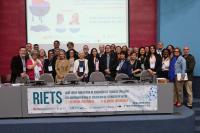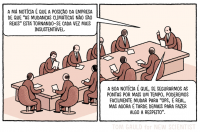Brazil: Free testing and access to treatment mean more people with chronic hepatitis C can be cured

Manoel Messias Neris, a 65-year-old resident of Santos, in Sao Paulo state, discovered he had hepatitis C in 1992 when he went to donate blood. “At first, I hadn’t read much about the disease and I thought that treatment to cure it would be simple,” he said. Instead, it took a number of years and several attempts at treatment before Manoel found the medication that would cure him.
In Brazil, patients with hepatitis C can receive free treatment through the Unified Health System. Last year, the country acquired new drugs (Daclatasvir, Simeprevir and sofosbuvir), which increase more than 90% cure rate of the disease and the patient needs only between 12 to 24 weeks to heal. These treatments are available in the Unified Health System in Brazil.
To Neris, access to these drugs involved a substantial change in your life. “Since February I no longer hepatitis. This time, I almost felt no side effects. Before, with other medicines could not walk well and now I can run again, even I participated in a marathon,” said the engineer and professor of Santos.
The Ministry of Health of Brazil estimates that 1.4 million Brazilians have hepatitis C, although only 120,000 cases have been reported in the last 13 years.In the south and southeast of the country is 86% of cases. In the Americas, it is estimated that 7.2 million people are living with chronic hepatitis C in the region, of which only 25% have been diagnosed and treated them about 300,000.
Hepatitis C is spread by contact with blood and infected as by products contaminated through blood transfusions, organ transplants and invasive procedures (such as injections or tattoo needles reused) and less frequently by sexual contact unprotected and from mother to child. Thanks to new treatments available, about 90% of people infected with hepatitis C can be cured, and reduce the risk of death from liver cancer or cirrhosis.
“Since the introduction of new drugs, Brazil has shown very positive results regarding cure rates of hepatitis C. The Brazilian initiative can serve as an example for others who also face the challenges posed by the disease” said Joaquin Molina, representative of the Pan American Health Organization / World Health Organization (PAHO / WHO) in the country.
Brokered PAHO / WHO member countries of Mercosur are negotiating the joint purchase of a new drug of last generation to treat hepatitis C. The amount will be set by governments, according to the demand of each country. Drug procurement will be conducted by the Strategic Fund of PAHO / WHO. The technical teams of the Organization will also support the Ministries of Health in the development of new clinical protocols, said Molina.
To Neris, the road was long. His first attempt to cure, which lasted about one year, caused severe side effects, in addition to a considerable decrease in platelets and leukocytes, which affected his immune system and exposed to other infections. In a second attempt, with another drug, it found the disease had subsided, but three months later returned hepatitis. Neris continued testing with other treatments, but no cure abandoned reach medical care for a while.
Now that agreed to this new generation of more effective drugs to fight the disease, Neris confident that hepatitis C is history for him. “Treatment for hepatitis C is not cheap. The state paid for my treatment and saved my life, “he added.
As part of the commemoration of World Hepatitis Day every July 28, PAHO / WHO calls to strengthen national and international efforts to combat this disease and urges Member States to take measures to disseminate information the public about hepatitis, prevention, access to testing and drugs.



